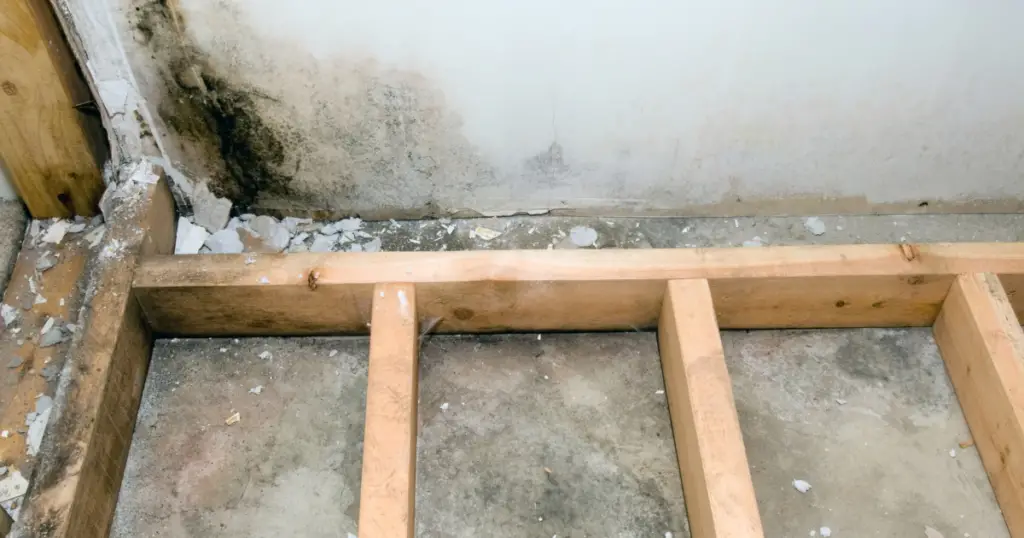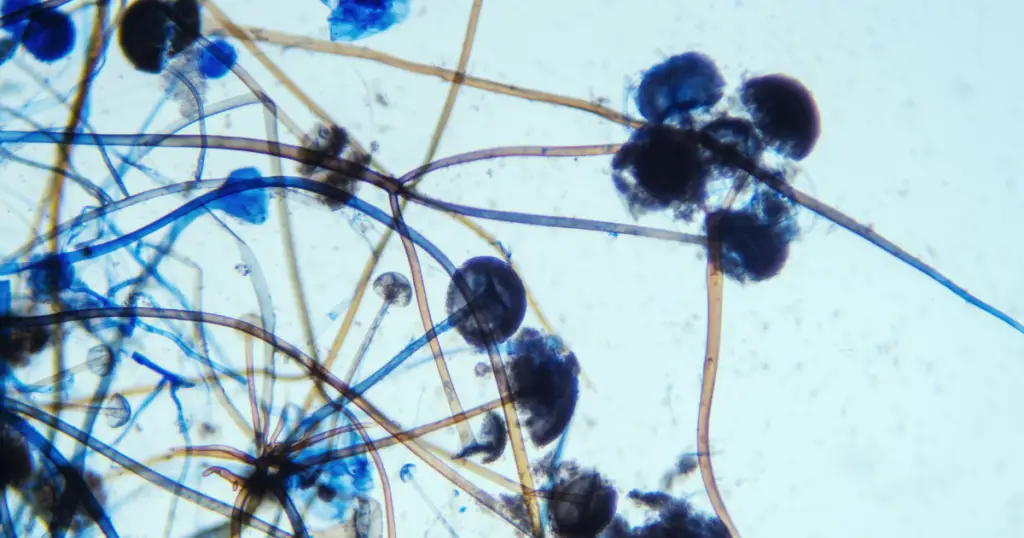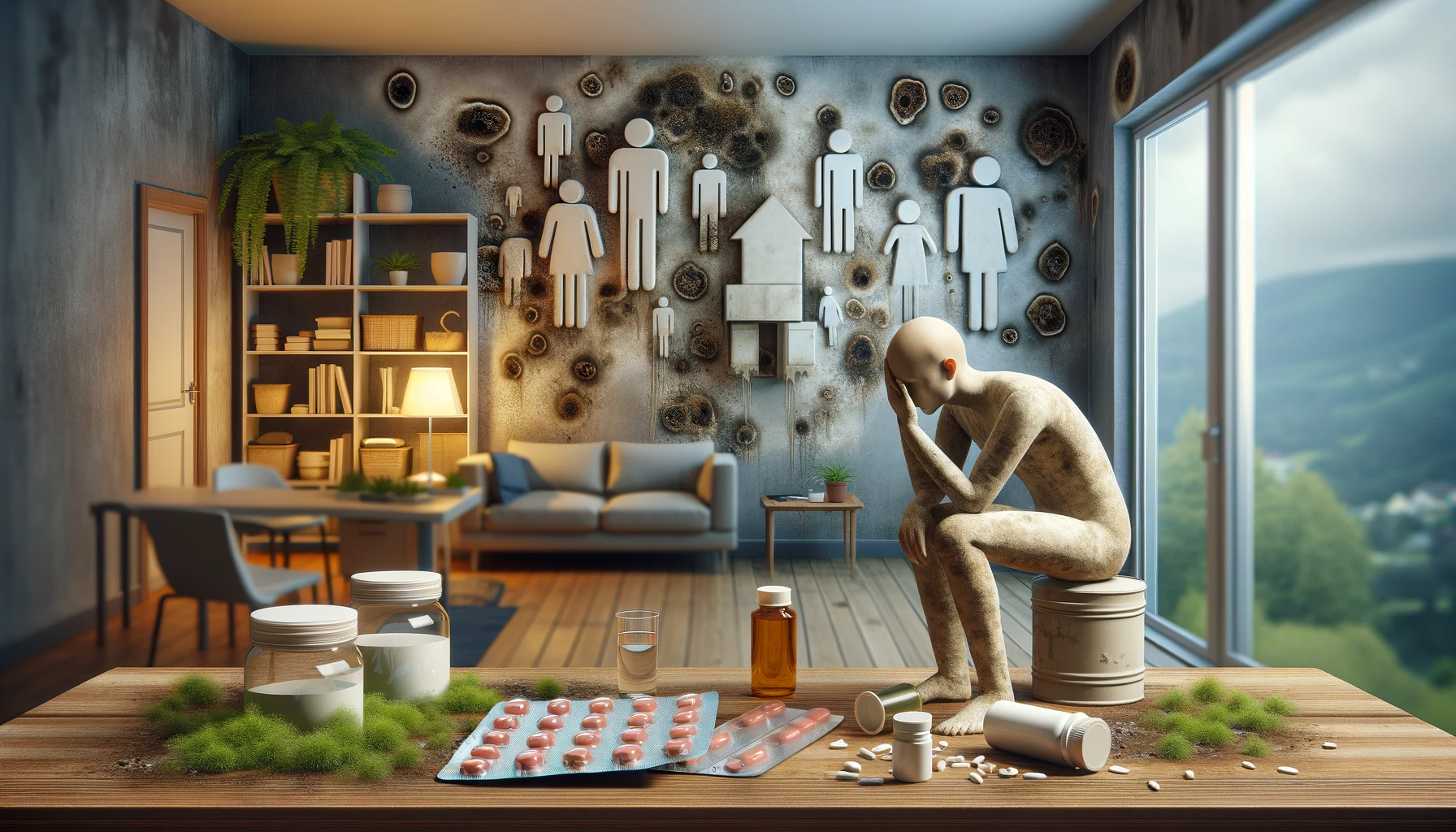This syndrome is caused by inhaling certain types of indoor molds, leading to various physical symptoms and health complications. Sadly, numerous individuals are unaware that the air they breathe in their environment could slowly contaminate them with poisonous mold.
This is becoming more common recently as many spend most of their time indoors and moist conditions facilitate the growth of molds. The symptoms often go away when the person is no longer exposed to the mold. However, some people may require medical treatment to manage their symptoms.
Are you worried about the possible effects of mold on your health? This article will provide you with the answers you seek regarding this silent threat. We’ll explain what mold is, how it can pose a risk to your health, and what you can do to reduce or eliminate your exposure and keep yourself safe, and much more.

What is Mold?
Mold is a type of fungus that grows in damp areas, and dark places and can cause health issues when inhaled. It’s commonly found in bathrooms, kitchens, basements, attics, and other areas with poor ventilation or water damage.
Some molds produce mycotoxins—poisonous substances that can cause symptoms such as coughing, wheezing, and skin irritations. When these toxins are inhaled over a long period, they can damage the nervous system.
They can come in different colors (green, black, pink, yellow, white), shapes, and sizes. The most common indoor molds are found in the Aspegnillium, Chaetomium, Cladosporium, and Stachybotrys chartarum.
Mold Growth – How it happens?
Mold growth usually occurs when there is a high humidity level in the air, poor ventilation, and/or water damage. It needs an organic material like wood or paper to feed on, so it can spread quickly if these conditions are present.
One of the most common causes of mold growth is a leaky pipe or roof, which can lead to water damage and provide mold spores with a moist environment to thrive. In addition, the use of air conditioning systems that are not properly maintained or cleaned can also increase mold growth.

Mold Spores
Mold spores are microscopic and are found floating in the air indoors and outdoors. Mold can colonize surfaces such as wood, drywall, fabric, and food. When mold spores are disturbed or mixed with water, they can grow into colonies of mold which spread more rapidly.
When molds spread their spores through the air, they can be inhaled and cause possible health complications. This is largely harmless in most cases; however, with high levels of exposure, it may lead to respiratory problems that imitate a cold or flu virus. Allergies and asthma can also be reactions triggered by the presence of mold toxins that are airborne or touchable when in contact with our skin.
Mold Exposure – How long does it take for mold exposure to make you sick?
The length of time that it takes for mold exposure to make you sick depends on many factors, such as the level of exposure and your overall health. Generally speaking, if exposed to high levels of mold toxins over a long period, it can take anywhere from weeks to months before symptoms appear.
However, some people are more sensitive to mold toxins and can experience symptoms after a shorter period of exposure. It is important to note that the presence of mold does not always lead to health complications; instead, the amount and duration of exposure play an important role in determining whether or not certain individuals will become sick from it.
It is also worth noting that some people are more susceptible to health complications due to mold exposure than others. Those with compromised immune systems, infants, and the elderly are at a higher risk of developing serious health problems from it.

What are the mold symptoms of Toxic Mold Sickness?
Toxic mold exposure occurs when a person is exposed to certain types of mold that release toxins into the environment. These molds, also known as “toxic black molds,” can produce volatile organic compounds (VOCs) that are toxic to humans. Dealing with mold could lead to a wide array of health issues, and we’ll break them down below.
Toxic Mold exposure: Symptoms
The symptoms of mold exposure can vary from person to person. Typical warning signs may include, but are not limited to:
- Respiratory issues and Allergy Symptoms: Prolonged mold exposure can severely harm your respiratory system, causing breathing issues and exacerbating existing conditions such as asthma. Among the most common symptoms associated with being exposed to mold are wheezing, coughing, sneezing, sore throat and congestion in the nasal passages.
- Nausea: Suffering from mold illness can lead to an assortment of digestive difficulties. Many people struggle with a diminished appetite and resulting weight loss, stomachache, sickness, diarrhea and vomiting.
- Headaches and Dizziness: Prolonged mold exposure can cause headaches and migraines in some individuals.
- Chronic Fatigue Syndrome: Those exposed to high levels of mold for an extended period may develop Chronic Fatigue Syndrome, which is characterized by severe exhaustion and a decreased ability to perform everyday tasks.
- Rashes: In some cases, mold exposure can lead to skin rashes or even hives.
- Memory Loss: This syndrome has been linked to memory loss and cognitive impairment in some individuals
- Depression: From depression and concentration obstacles to insomnia, anxiety, and memory loss – mold-related illnesses can display a range of psychiatric signs.
- Eye irritation: Mold exposure can also lead to eye irritation such as redness, itchiness and a burning sensation.
- Immune System Issues: Those exposed to high levels of mold for an extended period may experience weakened immune systems and increased susceptibility to developing illnesses.
- Cancer: Long-term exposure can lead to more serious health complications such as nerve damage and even cancer.
It is important to remember that if you believe that you have been exposed to toxic levels of mold, it’s best not to ignore your symptoms and immediately seek medical advice. It is also important to take preventative steps, such as having your home inspected for mold problems to address them before they become a bigger issue.

Can mold make you permanently sick?
Mold has the potential to cause long-term health problems if not properly treated. Prolonged exposure to certain types of mold can result in irritation to the respiratory system, skin and eyes, and even allergic reactions. In some cases, mold toxicity can lead to more serious illnesses such as Chronic Inflammatory Response Syndrome (CIRS).
It is important to identify any possible sources of mold and take steps to reduce your exposure as soon as possible. If you think that you have been exposed to mold, it is important to seek medical advice to avoid any lasting effects.

Mold Exposure Treatment
Mold exposure can present a range of health issues, including respiratory illnesses, fungal infections, allergies, and other symptoms. Treatment for mold exposure should be tailored to the individual and the type of mold they have been exposed to.
For those suffering from respiratory illnesses due to mold exposure, treatment may include removal from the area with elevated levels of mold spores, medications to reduce inflammation or swelling in the airways, and possibly inhalers if needed.
Fungal infections caused by mold exposure require antifungal medications to eliminate the infection. Additionally, those with a severe enough infection may need surgical intervention to treat underlying tissue damage or drainage issues.
Mold allergies can be treated with antihistamines or other over-the-counter medications as well as avoiding further contact with allergens such as pet dander and dust mites that also cause allergic reactions.
Symptoms caused by toxic molds, such as lightheadedness, nausea, and vomiting, generally resolve after removing oneself from that environment. However, more serious symptoms such as confusion or difficulty breathing, will require emergency medical attention.
If you suspect you have been exposed to it, you must immediately seek medical attention. An experienced healthcare practitioner can accurately diagnose and provide the best possible treatment plan for your particular situation.
How do I know if I have a Mold problem?
Here are some signs that may indicate you have a mold problem in your home:
- Visible growth of mold or mildew on surfaces.
- Musty odors and musty, stale smells.
- Water spots on walls or ceilings.
- Peeling paint or wallpaper due to moisture buildup behind it.
- Dark streaks or discoloration on walls and/or ceilings.
- Persistent health issues such as allergic rhinitis, sneezing, stuffy nose, allergies, asthma attacks, skin irritation, itchy eyes etc., when in the affected area of the home
The best way to know if you have a mold problem is to have your home professionally inspected. Trained professionals can identify mold’s presence and locate any moisture sources that may contribute to mold growth. In addition, they can provide tips for addressing mold issues in your home.

How can I prevent mold in my house?
Here are some tips for preventing mold in your home:
- Control moisture levels by using ventilation and dehumidifiers.
- Fix plumbing leaks as soon as possible.
- Reduce humidity levels indoors with a dehumidifier or air conditioner.
- Clean up water spills immediately and thoroughly dry the area after cleaning it.
- Regularly inspect areas prone to water damage, such as basements, bathrooms and kitchens, for signs of moisture or mold colonies.
- Inspect your roof, windows and doorways for gaps that can let in moisture from outside.
- Repair any cracked or damaged surfaces promptly to prevent further water damage.
- Make sure to clean any surfaces regularly with a disinfectant or anti-mold cleaner to prevent the buildup of potential allergens and toxins from molds growing on those surfaces
In conclusion, Toxic Mold Syndrome is a serious health concern and one that should not be taken lightly. It can cause a wide range of mystery symptoms that affect the body, and is often found in moist environments such as basements or other damp places. Those who are at an increased risk of developing respiratory diseases should take special care to keep their environment free of mold and mildew.
[/et_pb_text][/et_pb_column][/et_pb_row][/et_pb_section]


